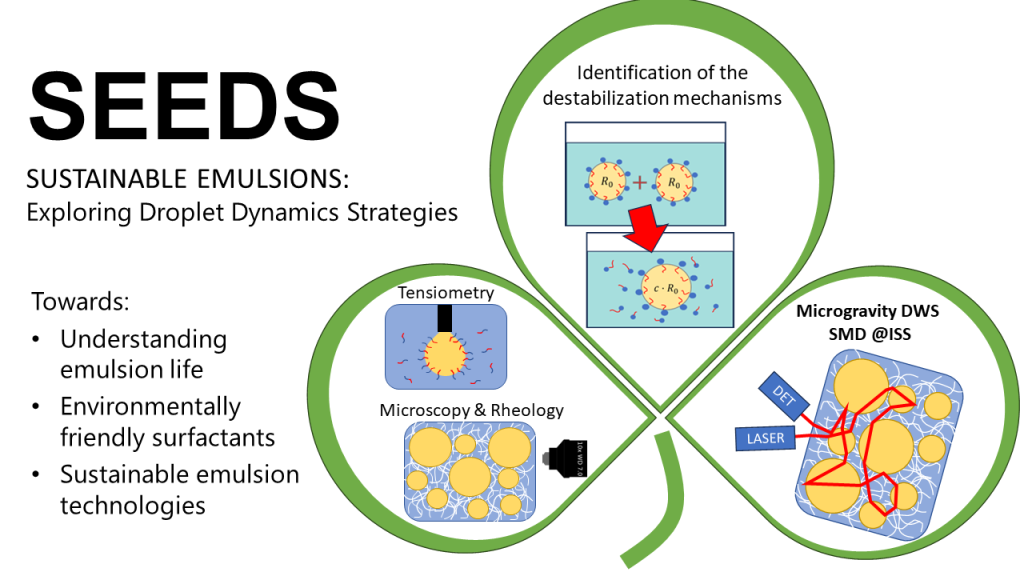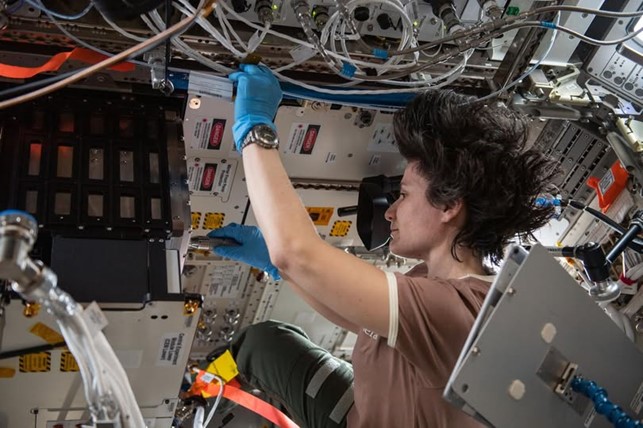European Space Agency

Partnership:

Emulsions are thermodynamically unstable liquid-liquid dispersions consisting of two phases, which at equilibrium tend to separate. The existence of kinetically stable emulsions relies on emulsifiers. These are blends of surface-active species, such as short-chain surfactants, polymers, proteins, and even nanoparticles, which accumulate at the liquid-liquid interface and decrease the energy needed for the creation of new interfaces.
Understanding the effects of surfactants and other additives on single destabilization mechanisms driving the behavior during emulsion aging is imperative. This type of mechanistic knowledge is possible in a microgravity environment allows for even more controlled isolation of droplet dynamics and mechanisms driving observed emulsion behavior, like e.g. aggregation of multiple individual droplets, coalescence of two droplets into a single larger one, and Ostwald ripening, that is migration of material from small to big drops.
The project builds on the preliminary results obtained in the 2022 and 2023 experimental campaigns exploiting the SMD facility onboard the ISS: by a sophisticated analysis of Diffusing Wave Spectroscopy results, we obtained the time evolution of important parameters describing the droplet population, and identified a new dynamic transition not observed previously, deemed to be related to drop coalescence.
This project extends the scope of the investigation to the role of the mechanical properties of the liquid phases, and of the molecular structure of the surfactant, employing fluid thickeners and surfactants of different molecular structure (branched vs linear) and of different ratio of hydrophilicity and hydrophobicity (HLB).
The acquired knowledge will allow to control droplet dynamics and stability, paving the way to more sustainable formulations of emulsions for earth and to support the application of emulsion-based technologies to space journey and exploration.
See also:
more news on the Unipr website https://www.unipr.it/node/110137

